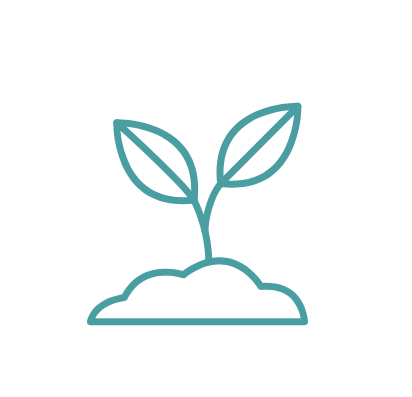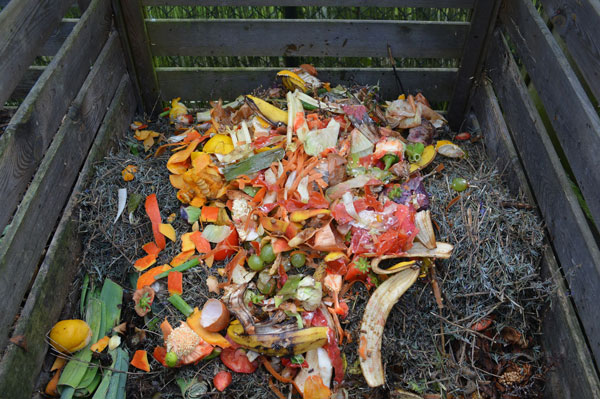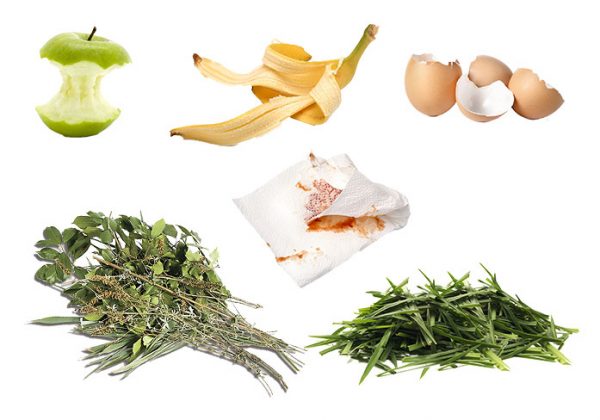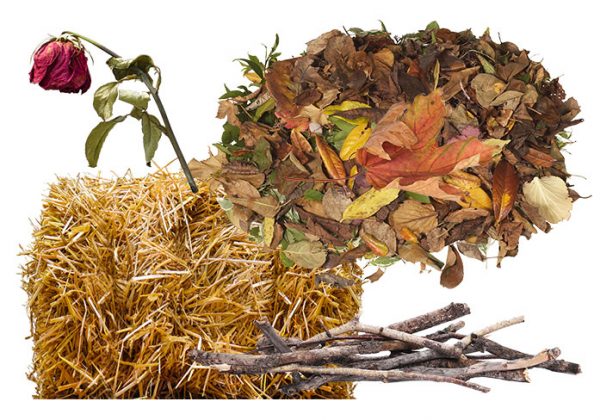Composting is nature’s way of recycling organic materials like leaves, grass, twigs, brush, and food scraps.
Composting is nature’s way of recycling organic materials like leaves, grass, twigs, brush, and food scraps.

Compost makes a rich soil amendment you can use to grow green lawns and lusher gardens. Adding compost to your soil helps it retain water loosens up heavy soils, and improves plant health by providing nutrients.

Composting reduces the amount of waste sent to landfill. This preserves landfill space-a limited resource. Keeping organic materials out of landfills avoids methane emissions in line with California’s greenhouse gas reduction goals. Methane is a potent and short-lived greenhouse gas produced in wet and oxygen-starved conditions like landfills.

Composting helps California reach our waste reduction goals by keeping organic waste (food waste, green waste and food-soiled paper products) out of landfill. SB 1383 requires the state to reduce organic waste disposal by 75% by 2025. That’s a reduction of 20 million tons annually by 2025. Communities that don’t make significant progress towards achieving these goals can face fines of up to $10,000 per day from the State.

Composting reduces the amount of garden waste you discard in the trash, and this saves you the expense of extra trash cans. Green wastes, including grass clippings, leaves, and shrub pruning, can be a large portion of the waste discarded from a single-family home — especially during the spring, summer, and fall months. Approximately 33% of California’s landfilled waste is uneaten food.
One of the most natural and environmentally sound things you can do around your home is to compost your yard trimmings, grass, and food scraps.
The simple ethic of “waste not, want not” requires that we make the best use of all our resources. Leaves, grass, other green wastes and food scraps can be turned into a useful product. These materials don’t belong in a landfill. Throwing these materials in the trash is a true waste of resources. Through composting, these materials are converted into a form that can be used again to enrich the soil and nourish living plants. “Compost” is the finished soil product that is produced by proper composting.
Composting at home (sometimes called “backyard composting”) is quite easy to do. In fact, you’re probably composting right now, without even realizing it. Fallen leaves, grass clippings, and dead plants and flowers compost naturally when they fall on the ground. But if you want to focus or accelerate the process, you can use a number of methods to make compost slowly or quickly.

A compost pile is really a teeming microbial farm. Bacteria, the most numerous and effective composters, are the first to break down plant tissue. Fungi and protozoans soon join the bacteria and, somewhat later in the cycle, centipedes, millipedes, beetles and earthworms all do their parts.
Anything growing in your yard is potential food for these tiny decomposers. Microorganisms use the CARBON in leaves or woodier wastes as an energy source. NITROGEN from grass or green materials provides the microbes with the raw element of proteins needed to build their bodies and multiply. (The more decomposers there are, the faster the compost pile will break down.)
There are a number of different ways to compost at home — some take less time and effort, and some take more.
The main things to consider are how much time you have to spend managing the pile, how much green waste your yard generates, and how quickly you want to have finished, usable compost.
This “add as you go” method uses one pile or bin — as a holding unit to contain garden wastes. This is also sometimes called the “static pile” method, because you don’t turn the pile very much.
Holding units, or static piles, are the least labor and least time-consuming way to compost.
Turning units are a series of three or more bins that allow garden wastes to be turned on a regular schedule. Turning units are appropriate for gardeners who have a larger volume of materials and/or want to produce compost faster.
Vermicompost or Vermiculture (vermi- meaning worm) is a method of composting with the help of worms. It’s easy to learn and manage, and doesn’t take a lot of space. One thing to note: it’s a great option for food scraps, but if you plan on composting a lot of woody yard waste, you should choose a different method.
The right material and the right ratio of materials is important to producing quality compost.
Materials with a higher carbon content include “brown” materials like dried leaves, straw, sawdust, wood chips, or sticks/branches. Materials that have a high nitrogen content include “green” items like fresh grass clippings, cow or horse manures, and fruit and vegetable trimmings from the kitchen.
What’s the “best” recipe for compost? It depends! But a good rule of thumb is to build a pile that has about 50% green materials and 50% brown materials.


To avoid problems with odors, pests, reseeding, or slowing down the compost process, don’t put any of these items in your backyard compost pile.
If you live in Victor Valley, you may take your green trimmings to the Victor Valley Compost facility. For a small fee they’ll turn it into compost. See the flyer for more information.
Accepted Materials
VICTOR VALLEY COMPOST
17888 East Abbey Lane, Victorville
Monday – Friday, 8am to 4pm
For more information call (760) 241-1284.
Place your compost pile in a convenient place-close to a water source. Don’t put piles under the eaves of your house-when it rains, you’ll drown your pile.
All living things on Earth, including the microbes in a compost pile, need a certain amount of water and air to sustain themselves. Microbes function best-and composting happens the fastest-when the compost heap is about as moist as a wrung out sponge. It is usually necessary to add water to the compost pile to keep the decomposition process going. The pile also needs to be turned periodically to get more air into the center of the pile.
A large compost pile will insulate itself and hold the heat given off by decomposers. The pile’s center will be warmer than its edges. The ideal compost pile size is 3′ x 3′ x 3′ (one cubic yard). Piles smaller than this will have trouble holding this heat, while piles larger than 5 feet on a side don’t allow enough air to reach the decomposers (microbes) at the center.
The more surface area microorganisms have to work on, the faster the materials will decompose. Chopping, shredding, or chipping garden wastes before adding them to your compost pile will help speed up the decomposition process.
Take care with fresh grass clippings. Add them in thin layers, or mix them with brown material when adding to the pile. Try drying them before adding.
In the fall, homeowners may have a lot of leaves (browns), but little green material. And in the summer, there is a lot of grass, but few brown materials. Many people start a pile for just leaves in the fall. They will start to decompose-but slowly. Then in the spring and summer months, the partly composted leaves are gradually mixed in with the grass clippings.
You can also find materials at your neighbors to add to your pile.
Finished compost is a dark brown, uniform, crumbly product with a pleasant, earthy aroma. There may be a few woody pieces that aren’t completely composted-just toss them back into your new pile or use them as mulch.
Compost can be used as a soil conditioner when dug into the soil in flower beds or vegetable gardens. It can also be used as a mulch on top of the soil.